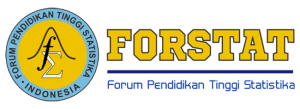Sex and Age Group Differences in The Spread of Tuberculosis In Indonesia: An Agent Based Modeling Approach
DOI:
https://doi.org/10.34123/jurnalasks.v13i2.342Keywords:
Tuberculosis, Agent-Based Modeling, Age Group, Sex, IndonesiaAbstract
Tuberculosis (TB) is a serious contagious disease. TB is even categorized as one of the top 10 main causes of death worldwide. According to WHO, in 2019 there were around 10 million cases of the population worldwide affected by TB. It is estimated that there are 1.4 million deaths due to TB worldwide in 2019. Whereas in Indonesia, it is estimated that there are 842,000 TB cases in 2018 and even around 32% of this cases have not been reported. Data and information of the number and distribution of TB cases are very limited in Indonesia, as it requires certain expertise and large costs in the data collection. Numerous research found that incidence of TB vary among different age groups and between men and women. The elderly population are more susceptible to exposure to TB due to multiple comorbidities and deficient immune response, while men are more likely to be exposed to infectious TB by other men. This condition highlights the importance of further studies on the spread of TB by age groups and sex in Indonesia. Therefore, this study used an agent based model to enhance the understanding of the aggregate and the spread of TB in Indonesia. The study results confirmed that at national level, TB incidences varied among different age groups and sexes. The results of this study also revealed the need for further study on the spread of TB in the age group under 15 years. It is expected that this study result can be useful for TB control program in Indonesia.















